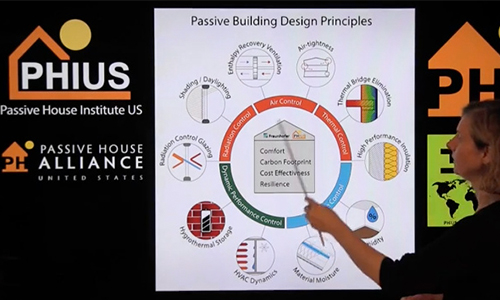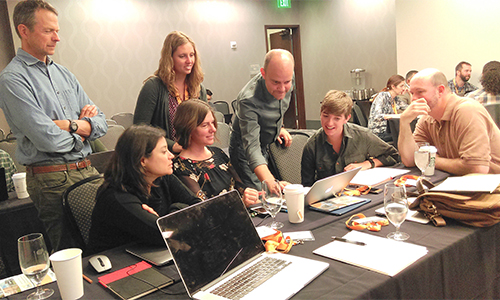Passive House Institute US, Inc. (PHIUS) is a non-profit organization committed to making high-performance passive building the mainstream market standard. The PHIUS+ 2015 Passive Building Standard (PHIUS+) presents an affordable solution to achieving the most comfortable and cost-effective building possible - and the best path for achieving zero energy and carbon. PHIUS+ Certified and Pre-Certified projects now total more than 2 million square feet across 1,750 units nationwide.
The DCSEU spoke with Katrin Klingenberg, PHIUS Co-Founder and Executive Director, to learn how the Passive House Movement is changing the future of green building.

For someone that does not know a lot about passive house principles and PHIUS+, what is it and what makes passive houses different from LEED certified buildings?
LEED really is a holistic green building rating system; PHIUS+ is a system that focuses more narrowly on energy, carbon reductions, and resilience, as well as indoor health and comfort. LEED is a perfect complimentary certification to PHIUS+ certification that goes beyond the core elements of energy, health, and comfort. LEED for Homes certification references PHIUS+ and awards 31.5 points under the energy and atmosphere category for that certification.
What are the origins of the Passive House Movement and why did you bring it to the US?
Concern for the climate is the short answer. As an architect, I wanted to be part of the solution, not the problem. Forty percent of all global emissions stem from buildings, and those emissions have to be reduced dramatically to stabilize the climate. Emissions can be significantly reduced in a fairly cost effective way through passive measures. Let’s say, I decided to revive the movement.
The term "passive house" was coined in the 1970s by Department of Energy and Canadian building scientists and researchers as a response to the oil embargo. The same researchers also already codified the same passive house and building principles that we refer to today. Even the energy reduction targets are based on very similar targets - approximately a factor 10 reduction. Books from the 70s and 80s talk about a "superinsulation" movement that was in full swing in the middle of the 80s, superinsulation being essentially the same thing as passive house. But then, interest in efficiency waned. When I built my house in 2002, only a few people were still building superinsulated passive homes to this level of efficiency.
In the meantime, the Germans had picked up the idea in the early 90s and continued the development. A pass fail standard was added, a design tool developed, and high performance components were further developed. That's what I decided to promote when I first started with this work. Once we learned that the standards initially developed for Germany had to be climate-specific and cost-optimized, and we began teaching professionals nationwide in these design strategies, the concept began once again to take off.
What is the PHIUS+ Certification and how does it benefit professionals in their careers?
In 2008, we decided to create a professional certificate to aid in the market's transformation. We created a certificate for passive building professionals that identifies architects, builders, and energy raters as specialists in energy efficient design that meets our global carbon reduction goals - specialists who know how to design structures to meet superior comfort and health standards while also being resilient. The training course includes 40 hours of online instruction in passive house and building basics, followed by a 5 day in-class session that focuses on energy modeling and design. The in-class session is concluded on the last day by taking an online exam.
PHIUS trained professionals that can designate themselves by adding the credential Certified Passive House Consultant, or "CPHC", are very well-recognized in the market as leaders in guiding projects towards necessary carbon reductions, and superior health, comfort, and resilience at an affordable price.

Tell us more about projects in the DC area: What impact does passive house have in the District?
There are single-family, market-rate passive homes as well as affordable single-family, duplexes, tri-plexes and multifamily projects in the District. One certified Habitat for Humanity duplex project even has a small solar photovoltaic (PV) system! It's a fantastic example of how easy it is to get to zero in an affordable way if one has designed a super efficient envelope. Passive house projects provide residents and landlords alike with extremely low utility bills, excellent comfort, healthy indoor environments, and reduced maintenance footprints.
What is your vision for the future?
PHIUS's mission is to make passive building best practices. The vision here is that, if we are successful, everyone will live in homes and buildings that meet our carbon reduction goals. Collectively we will stabilize the climate and make the environment better. By doing so, we will all live in more comfortable, healthy, and safe buildings at an affordable cost to the individual and society.